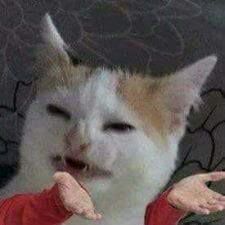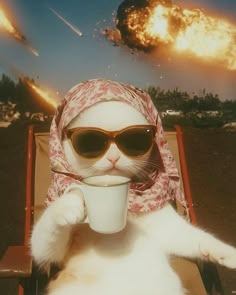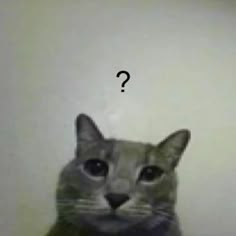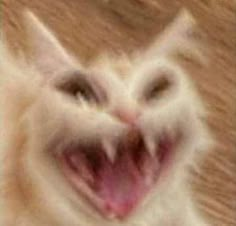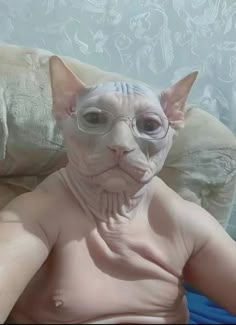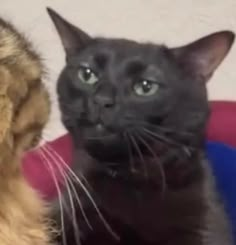A Meow-gical History: Tracing the Evolution of Cat Memes
Summary
This blog post explores the history of cat memes, from their early beginnings on websites like Something Awful to their current dominance on social media. It examines key milestones in cat meme evolution, including the rise of LOLcats, the popularity of Grumpy Cat, and the emergence of new cat meme formats. The post also delves into the psychological reasons behind the enduring appeal of cat memes, highlighting their cuteness, relatability, and versatility.
The Purr-fect History of Cat Memes
Cat memes. They're everywhere. From grumpy felines to keyboard-obsessed kitties, these images and videos have conquered the internet. But how did this all start, and why are cats so meme-able?
The Dawn of Feline Funny
The story of cat memes isn't a recent phenomenon. It stretches back to the early days of the internet. Before widespread social media, websites like Something Awful and 4chan played a crucial role in shaping online culture. These platforms were breeding grounds for early internet humor, and cats quickly found their place within it.
One of the earliest examples often cited is the image of a cat demanding "I Can Has Cheezburger?" This image, featuring a blurry photo of a British Shorthair cat with a speech bubble, appeared on the website Something Awful in 2007. It quickly spread to other online communities, solidifying its place as a foundational cat meme. The intentionally poor grammar and absurd scenario resonated with internet users, establishing a template for future cat-related humor.
LOLcats and the Rise of Cuteness
The "I Can Has Cheezburger?" meme spawned a whole subculture: LOLcats. These images typically feature cats accompanied by captions written in a deliberately childish and grammatically incorrect style, often referred to as "lolspeak." The humor lies in the juxtaposition of the cute cat image with the nonsensical text. Websites dedicated to LOLcats, like ICanHasCheezburger.com, became incredibly popular, further fueling the cat meme craze.
LOLcats weren't just about silly captions. They represented a shift in internet humor. The focus moved towards lighthearted, easily digestible content. The inherent cuteness of cats, combined with the absurdity of lolspeak, proved to be a winning formula. This era established cats as a dominant force in online meme culture.
Grumpy Cat and the Age of Relatability
While LOLcats emphasized cuteness and silliness, the emergence of Grumpy Cat in 2012 marked a new phase in cat meme evolution. Grumpy Cat, whose real name was Tardar Sauce, became famous for her perpetually frowning face. This unique appearance, caused by feline dwarfism, made her an instant internet sensation.
Grumpy Cat's appeal wasn't just about her unusual looks. Her grumpy demeanor resonated with a generation that often felt cynical and disillusioned. Memes featuring Grumpy Cat often expressed feelings of annoyance, sarcasm, and general dissatisfaction. This relatability factor contributed to her widespread popularity and cemented her status as one of the most iconic cat memes of all time.
Beyond the Classics: Expanding the Cat Meme Universe
After LOLcats and Grumpy Cat, the cat meme landscape continued to diversify. New cat memes emerged, each with its own unique style and appeal. Some focused on specific breeds, like the dramatic Persian cat or the derpy-looking Scottish Fold. Others highlighted particular cat behaviors, such as their love of boxes or their tendency to knock things off shelves.
The rise of platforms like YouTube and TikTok also contributed to the evolution of cat memes. Short video clips of cats performing funny or unusual actions became incredibly popular. These videos often went viral, further expanding the reach of cat memes and introducing them to new audiences.
Why Cats? The Psychology of Cat Memes
So, why are cats so meme-able? Several factors contribute to their enduring popularity. First, cats are undeniably cute. Their small size, soft fur, and playful nature make them inherently appealing to humans. This cuteness triggers a positive emotional response, making us more likely to engage with cat-related content.
Second, cats are relatable. Despite their often aloof behavior, cats exhibit a range of emotions and behaviors that humans can identify with. They can be playful, affectionate, curious, and even grumpy. This relatability makes them ideal subjects for memes that express a wide range of human experiences.
Third, cats are versatile. Their appearance and behavior can be easily adapted to fit a variety of meme formats. Whether it's a photo of a cat looking confused or a video of a cat chasing a laser pointer, there's always potential for creating new and engaging cat memes.
The Enduring Appeal of Cat Memes
Cat memes have evolved significantly since their early days on Something Awful. They've gone from simple image macros to complex video edits, but their core appeal remains the same: they're cute, relatable, and funny. As long as cats continue to be adorable and internet users continue to seek out lighthearted entertainment, cat memes will likely remain a fixture of online culture. They offer a quick dose of joy and a shared sense of humor, connecting people across the globe through their love of feline antics. They are, in essence, the purr-fect form of internet entertainment.



